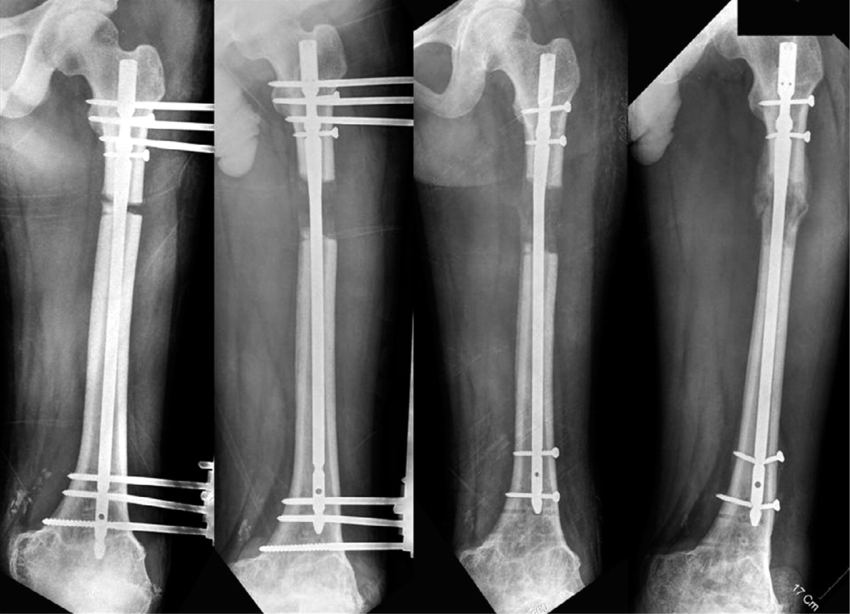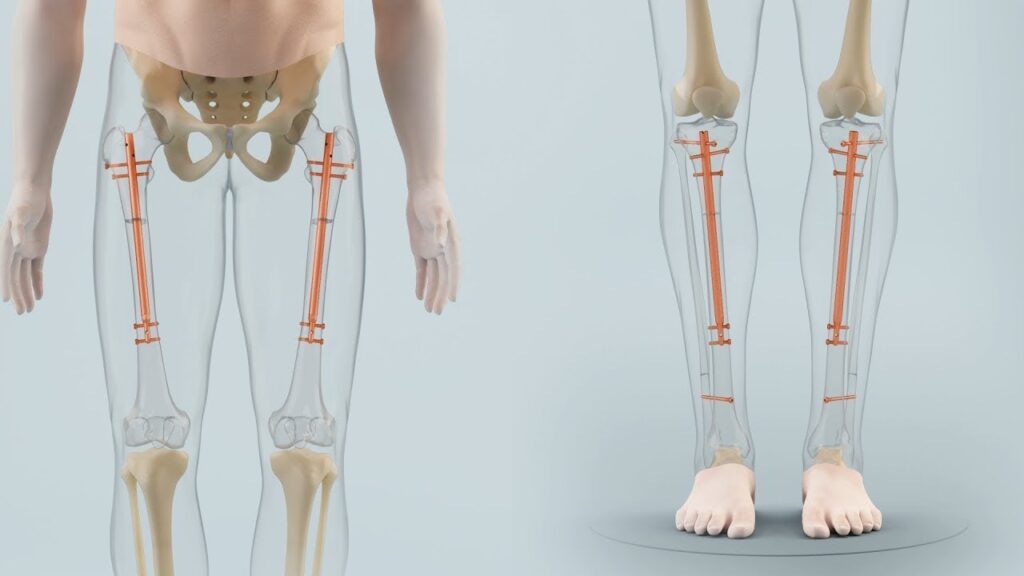Discover the benefits and process of intramedullary lengthening nails, a modern approach to limb lengthening. Learn about the procedure, recovery, and success stories.

Outline
| Headings | Sub-Headings |
|---|---|
| Introduction | – Understanding Intramedullary Lengthening Nails |
| What Are Intramedullary Lengthening Nails? | – Basic Overview |
| – History and Development | |
| How Intramedullary Lengthening Nails Work | – Mechanism of Action |
| – Surgical Procedure | |
| Benefits of Intramedullary Lengthening Nails | – Minimally Invasive Technique |
| – Enhanced Comfort and Convenience | |
| – Reduced Risk of Infection | |
| Candidates for Intramedullary Lengthening Nails | – Ideal Candidates |
| – Health and Age Considerations | |
| Procedure and Techniques | – Pre-Surgery Evaluation |
| – Detailed Surgical Procedure | |
| – Post-Surgery Care and Rehabilitation | |
| Recovery Process and Timeline | – Initial Recovery Phase |
| – Physical Therapy and Rehabilitation | |
| – Long-Term Follow-Up | |
| Risks and Complications | – Common Surgical Risks |
| – Long-Term Complications | |
| – Mitigating Risks | |
| Success Stories and Patient Testimonials | – Real-Life Experiences |
| – Medical Case Studies | |
| Technological Advances and Future Directions | – Recent Innovations |
| – Future Trends in Limb Lengthening | |
| FAQs | – |
| – What are intramedullary lengthening nails? | |
| – How does the intramedullary lengthening process work? | |
| – Who is an ideal candidate for intramedullary lengthening nails? | |
| – What are the benefits of intramedullary lengthening nails? | |
| – What are the risks associated with this procedure? | |
| – How long is the recovery period? | |
| Conclusion | – |
Intramedullary Lengthening Nails: A Modern Approach to Limb Lengthening
Intramedullary lengthening nails represent a significant advancement in limb lengthening surgery, offering a modern, minimally invasive approach that enhances patient comfort and outcomes. This comprehensive guide explores the benefits, procedure, recovery process, and success stories associated with intramedullary lengthening nails.
Introduction
Limb lengthening surgery has undergone significant evolution over the years, with intramedullary lengthening nails emerging as a groundbreaking technique. This method provides a more comfortable and efficient way to achieve bone lengthening, reducing many of the complications associated with traditional methods.
What Are Intramedullary Lengthening Nails?
Basic Overview
Intramedullary lengthening nails are internal devices implanted within the bone marrow cavity. These nails are designed to gradually extend, promoting new bone growth and effectively lengthening the limb.
History and Development
The development of intramedullary lengthening nails began in the late 20th century, with significant advancements in the 21st century. Innovations in medical technology and materials have led to the creation of more effective and patient-friendly lengthening devices.
How Intramedullary Lengthening Nails Work
Mechanism of Action
Intramedullary lengthening nails operate on the principle of distraction osteogenesis. The nail is surgically inserted into the bone, and through controlled mechanical adjustments, it gradually separates the bone segments. This controlled distraction stimulates new bone formation in the gap.
Surgical Procedure
The surgical procedure involves making an incision to insert the nail into the bone’s intramedullary cavity. The nail is then fixed in place, and post-surgery, the lengthening process is initiated using an external remote control that activates the nail’s internal mechanism.
Benefits of Intramedullary Lengthening Nails
Minimally Invasive Technique
Intramedullary lengthening nails are minimally invasive, requiring smaller incisions compared to external fixators. This reduces surgical trauma and promotes faster recovery.
Enhanced Comfort and Convenience
These nails are entirely internal, eliminating the need for bulky external frames. Patients experience greater comfort and convenience, with fewer lifestyle disruptions during the lengthening process.
Reduced Risk of Infection
The internal placement of the nails significantly reduces the risk of infection, a common complication with external fixators that have pins penetrating the skin.
Candidates for Intramedullary Lengthening Nails
Ideal Candidates
Ideal candidates for intramedullary lengthening nails include individuals with congenital limb length discrepancies, trauma-induced shortening, or those seeking cosmetic height enhancement. Candidates should have realistic expectations and be in good overall health.
Health and Age Considerations
While both children and adults can benefit from this procedure, adults who have completed their growth phase are typical candidates. Good bone health and the absence of chronic conditions that could affect healing are crucial for successful outcomes.
Procedure and Techniques
Pre-Surgery Evaluation
A comprehensive pre-surgery evaluation is essential. This includes a detailed medical history review, physical examination, and imaging studies such as X-rays and MRIs to assess bone structure and plan the surgery.
Detailed Surgical Procedure
The surgical procedure involves anesthesia, making a small incision, and inserting the intramedullary nail into the bone. The nail is then secured, and the incision is closed. Post-surgery, the nail’s lengthening mechanism is gradually activated according to a predetermined schedule.
Post-Surgery Care and Rehabilitation
Post-surgery care focuses on pain management, monitoring for complications, and physical therapy. Patients are instructed on how to use the external remote control to adjust the nail’s lengthening mechanism gradually.
Recovery Process and Timeline
Initial Recovery Phase
The initial recovery phase involves close monitoring and limited activity to ensure proper bone healing and alignment. Pain management and infection prevention are key priorities during this phase.
Physical Therapy and Rehabilitation
Physical therapy is crucial for maintaining joint mobility, muscle strength, and overall function. Regular sessions help patients adapt to the lengthening process and minimize stiffness or contractures.

Long-Term Follow-Up
Long-term follow-up includes regular visits to the surgeon to monitor bone healing and make necessary adjustments. Complete consolidation of the new bone can take several months to a year.
Risks and Complications
Common Surgical Risks
Common surgical risks include infection, nerve damage, blood clots, and anesthesia-related complications. These risks are minimized through careful surgical planning and post-operative care.
Long-Term Complications
Long-term complications can include joint stiffness, muscle contractures, and potential misalignment. Regular monitoring and rehabilitation are essential to address these issues promptly.
Mitigating Risks
Mitigating risks involves thorough pre-surgery evaluations, using advanced surgical techniques, and providing comprehensive post-surgery care and physical therapy.
Success Stories and Patient Testimonials
Real-Life Experiences
Many patients have shared their success stories following intramedullary lengthening surgery. These testimonials highlight the significant improvements in height, mobility, and quality of life.
Medical Case Studies
Medical case studies provide valuable insights into the outcomes and challenges associated with intramedullary lengthening nails. These studies contribute to ongoing improvements in surgical techniques and patient care.
Technological Advances and Future Directions
Recent Innovations
Recent innovations in intramedullary lengthening technology include motorized nails that allow for more precise and controlled lengthening. These advancements have improved patient outcomes and comfort.
Future Trends in Limb Lengthening
Future trends may include the integration of robotics and artificial intelligence to enhance surgical precision and outcomes further. Research into regenerative medicine could also lead to new approaches in bone lengthening and healing.
FAQs
What are intramedullary lengthening nails?
Intramedullary lengthening nails are internal devices implanted within the bone marrow cavity to gradually lengthen bones using the principle of distraction osteogenesis.
How does the intramedullary lengthening process work?
The process involves inserting the nail into the bone and using an external remote control to activate the nail’s internal mechanism, gradually separating the bone segments to stimulate new bone growth.
Who is an ideal candidate for intramedullary lengthening nails?
Ideal candidates include individuals with congenital limb length discrepancies, trauma-induced shortening, or those seeking cosmetic height enhancement. Good overall health and bone quality are essential.
What are the benefits of intramedullary lengthening nails?
Benefits include a minimally invasive technique, enhanced comfort and convenience, and a reduced risk of infection compared to external fixators.
What are the risks associated with this procedure?
Risks include infection, nerve damage, blood clots, joint stiffness, and muscle contractures. These risks are minimized through careful surgical planning and post-operative care.
How long is the recovery period?
The recovery period can take several months to a year, involving an initial recovery phase, physical therapy, and long-term follow-up to ensure complete bone healing and consolidation.
Conclusion
Intramedullary lengthening nails represent a modern, patient-friendly approach to limb lengthening surgery. Understanding the procedure, benefits, and potential risks can help patients and healthcare providers make informed decisions and achieve successful outcomes.



